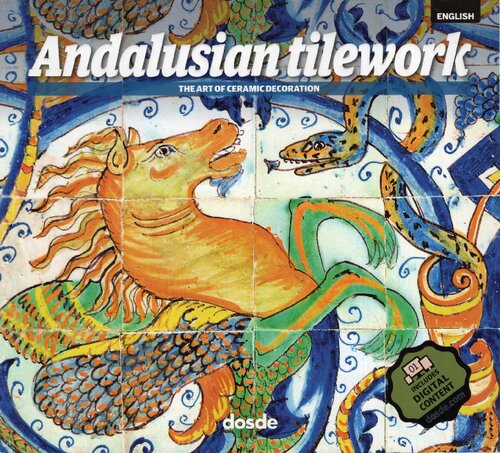

Most ebook files are in PDF format, so you can easily read them using various software such as Foxit Reader or directly on the Google Chrome browser.
Some ebook files are released by publishers in other formats such as .awz, .mobi, .epub, .fb2, etc. You may need to install specific software to read these formats on mobile/PC, such as Calibre.
Please read the tutorial at this link: https://ebookbell.com/faq
We offer FREE conversion to the popular formats you request; however, this may take some time. Therefore, right after payment, please email us, and we will try to provide the service as quickly as possible.
For some exceptional file formats or broken links (if any), please refrain from opening any disputes. Instead, email us first, and we will try to assist within a maximum of 6 hours.
EbookBell Team

4.1
30 reviewsThis book devoted to Andalusian Tilework compiles Andalusia's most important and representative tile designs and ceramic work. Inheritor of Muslim art, Andalusian tilework demonstrates the historical evolution of the different artistic styles that took root in the Iberian Peninsula.
Organised into chapters, this book carries out a chronological tour of Andalusian tilework, exploring the evolution of different decorative techniques and pictorial motifs typical of each period. Starting from Mudejar tilework to Modernist tilework, as well as Isabelline, Renaissance and Historicist tilework.
This book published by Dosde includes more than 300 excellent quality pictures and detailed information which allow the reader to get closer to Andalusian ceramic work, a highly skilled technique that can still be appreciated today thanks to monuments such as the Alhambra in Granada.
A publication that would interest all art book and architecture book lovers, as well as those who would like an excellent souvenir of the fascinating world of Andalusian tilework.
The origins of Andalusian ceramic work
The stunning azulejos, the vitrified ceramic tiles used to adorn walls and floors, constitute one of the main signs of identity in Andalusian art and architecture. This type of decoration has its most distant origins in Mesopotamia and ancient Egypt, civilizations to which the first known glazed bricks are attributed.
The application of glazed ceramic work on architectonic surfaces was taken up and continued by the Persian Empire, and it received its definitive impulse with the blossoming of Islamic culture. The Muslims promoted the development of new techniques that were able to exploit the full artistic potential of vitrified ceramic work, in an attempt to emulate Greco-Roman and Byzantine mosaic work.
The alicatado technique in Andalusian tilework
The most representative mosaic tilework in Muslim Andalusia was created using the alicatado technique, which consisted of cutting glazed
…